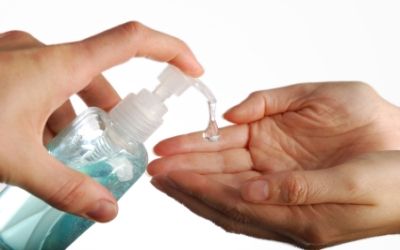Experts Agree U.S. Needs to Step Up Infection Control Efforts, Starting With Hand Hygiene Practices

U.S. healthcare facilities are grossly underperforming in hand hygiene compliance, which could impact healthcare-associated infections and patient safety, said two of the world's foremost experts on infection prevention and hand hygiene.
Speaking last week before more than 200 healthcare leaders at a hand hygiene forum organized by Loyola University Medical Center and Medline Industries, Inc., at Loyola's Strich School of Medicine in Maywood, Ill., professor Didier Pittet, MD, director of the infection control program at the University of Geneva, Switzerland, and Mark R. Chassin, MD, FACP, MPP, MPH, president of the Joint Commission, cited time constraints, product misconceptions and faulty data as main reasons for the country's poor hand hygiene compliance, but also offered hope for improvement. The Joint Commission Center for Transforming Healthcare tackled the issue of hand hygiene compliance as its first project, according to Chassin. The participating organizations were surprised to learn that their rate of hand hygiene compliance averaged 48 percent.
"These healthcare organizations had the courage to step forward to tackle the problem of hand washing by digging deep to find out where the breakdowns were taking place so we could create targeted solutions," Chassin says. "We are very optimistic since the original facilities participating in the project have seen their average compliance increase to 81 percent and have sustained that level for 10 months."
Other reasons for poor compliance, according to Pittet, is lack of time by healthcare workers to perform hand hygiene and misinformation on what type of product is most effective soap and water, alcohol-based hand sanitizers or foams.
"The problem with soap and water is that it takes anywhere from one to one-and-a-half minutes to perform proper hand hygiene. If workers wash their hands 15-20 times in an hour, that would take about half an hour, which is totally unrealistic. Also, after several washings, your hands will become dry and chapped," says Pittet. "Alcohol-based hand rubs take only 15 to 30 seconds, they're also more effective than soap and water, better for your hands and more convenient because you can carry them around with you."
Pittet, a member of the Advisory Board of the World Health Organization (WHO) World Alliance for Patient Safety, also emphasized that there is no evidence in the current published literature that supports the effectiveness for foam-based hand hygiene products. However, he strongly suggests using alcohol-based hand rubs with at least 80 percent ethanol a significantly higher percentage than 62 percent ethanol, commonly used by U.S. facilities, which is at the low end of the CDC recommendation.
"It's hard to believe that there have been so many products that have been used in the United States that will never pass the European norms," says Pittet. "So some of the products that you are using in the United States have not made it to the European market, because they just don't meet the norms."
According to Chassin, the solutions developed by the original organizations participating in the Center for Transforming Healthcare's hand hygiene project are now available via the Center's Targeted Solutions Tool (TST), a complimentary data-driven application. The solutions are validated and customized to address an organization's particular barriers to excellent performance. Use of the tool is self- paced, confidential, and offers instantaneous data analysis.
Chassin said the good news is that more healthcare facilities are focusing major efforts on hand hygiene compliance. He cited that more than 1,500 projects at 900 organizations are now using the Center for Transforming Healthcare's hand hygiene TST.
The Guardians of Animal Health: Who Are Veterinary Infection Preventionists?
March 21st 2025Veterinary infection control experts Leslie Kollmann, BS, AAS, CVT, CIC, Denise Waiting, LVT, and Leslie Landis, LVT, BS, discuss challenges, zoonotic disease risks, and the importance of education, collaboration, and resource development in animal care facilities.
The Latest on CLABSIs and CAUTIs: Evidence-Based Approaches for Infection Prevention
February 27th 2025Health care–associated infections like CLABSIs and CAUTIs threaten patient safety. Learn evidence-based strategies, new technologies, and prevention protocols to reduce these infections and improve outcomes.
Resilience and Innovation: The Pivotal Contributions of Black Americans to Health Care and Medicine
February 24th 2025During Black History Month, we honor the resilience and contributions of Black medical professionals in health care. Despite barriers, they have led transformative changes, advocating for equitable access and medical excellence. Recognizing their impact ensures a more inclusive health care future for all.
Glove Usage Guideline: From The Joint Commission, CDC, and World Health Organization
February 17th 2025Proper glove use is crucial in health care settings to prevent infections. Guidelines from TJC, CDC, and WHO stress correct selection, usage, and disposal to minimize health care–associated infections (HAIs) and cross-contamination risks. Infection preventionists (IPs) play a key role in educating staff, enforcing compliance, and improving patient safety through standardized glove practices.